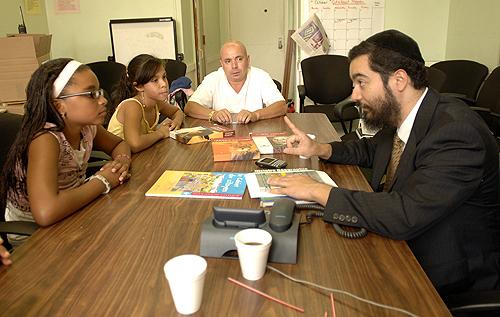More U.S. schools begin to teach subjects in two or more tongues

Sep 4, 2007
Last updated on May 12, 2016 at 03:17 p.m.
NEW YORK – Four new dual-language programs are starting in New York this fall. Three are in French, including one at a school in Manhattan’s Harlem area, and the fourth is in Chinese.
“It’s about time,” says Fabrice Jaumont, the education attache at the French Embassy in Manhattan, the cultural branch of the main embassy in Washington.
“This is a competitive country, and if Americans want to compete globally, they won’t be first anymore if their language skills are not good,” says the energetic young diplomat.
The new programs are part of a national trend to teach American children subjects such as math, social studies and science in a foreign language. This fall, several hundred thousand youngsters across America are headed to taxpayer-funded classes taught in Spanish, Hebrew, Haitian Creole, Korean, Russian and other languages.
Get The Daily Illini in your inbox!
On Manhattan’s Lower East Side, children at the public Shuang Wen Academy spend much of their school day in classes taught in Mandarin Chinese. In each class, about half the students are fluent in Chinese, the other half in English; some are immigrants, others American-born. That fifty-fifty approach is applied to more than 10,000 other New York City children who voluntarily signed up for the city Department of Education’s 67 dual-language programs (compared to 51 in 2004). Each child also starts with separate lessons in the language.
The students end up helping one another with a second language, while learning a subject together. “It’s very organic,” says Shimon Waronker, principal at the Mott school.
Not to be confused with controversial bilingual education designed to mainstream non-English-speaking children, subjects taught in a foreign language are designed to make a child fluent in speaking and writing two languages. Most of the children start such classes already in elementary school, or even in kindergarten.





